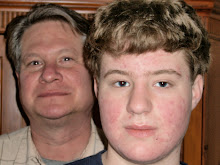Title: City Heat
Released: 1984
Genre: Gangster action-comedy
Notable for: Clint stars with Burt Reynolds
Coolest thing Clint does: Walks down the middle of the street like God himself in gunfight with four hoods
"City Heat" is probably the most over-exaggerated "disappointment" in Clint's career.
Hollywood drooled dollar signs when Clint was paired with Burt Reynolds for a blockbuster action-comedy. Those idiots failed to realize two stars with a combined age of 101 were overripe to really kill audiences in a genre dominated by Eddie Murphy.
Ticket sales were disappointing to Hollywood idiots, but the film still cleared about $13 million in profit. With inflation, it made $26 million in today's dollars.
As an entertainment product, we give "City Heat" a solid 7.5 on the Clint-O-Meter. It's nowhere near a 10 ("The Outlaw Josey Wales"), but it has plenty of gunfights and is enjoyable if viewed without the burden of high expectations.

Clint plays a steely police lieutenant (what a stretch) in 1933. Reynolds is his former partner turned wisecracking private eye.
The comedy mostly springs from banter between the two stars. Their interplay is characterized by Clint calling Burt "shorty" and Burt calling Clint "ape face." One recurring "gag" has Clint watch Burt get beat up or shot at without lifting a finger to help, until a bad guy accidentally spills his coffee or fires a stray bullet through his windshield. Then Clint grimaces, rises and delivers swift and harsh vengeance. See? He cares more about his coffee than Burt!
None of it is laugh-out-loud funny, but that was predictable even in 1984, considering the comic track record of Mr. Reynolds.
The action in action-comedy comes when the boys are thrown together to fight two competing mob gangs. Bullets fly, although in a comic-book sort of way instead of the menacing-danger style of Murphy in "Beverly Hills Cop."
You may ask how Clint and Burt come to fight two gangs of mobsters at once. We wish we could answer clearly, but unfortunately the script avoids coherent plot development.
Conflict starts when Burt's partner in the private eye business, Richard Roundtree, is very predictably murdered after double-crossing one mobster in a scheme to screw over another.
Never mind all that. The point is, Burt and Clint have a crapload of fistfights and gunfights and never get a scratch.
The best action scene has Clint turn bullet-proof as he slowly walks down a city street and kills four gangsters. His shotgun blasts make a car explode into a fireball and make a fire hydrant spray water on the blaze. Even we can see that is intended to be a gag because Clint plays his "Fistful of Dollars" image so over-the-top.
Whorehouse humor comes into play in the final scene, when Burt dresses in a wolf's head and girl's nightgown liberated from a bordello customer with a Little Red Riding Hood fantasy. Thus disguised, he beats up some hoods who kidnapped his horny, high-society girlfriend (Madeline Kahn, who should have been in more scenes).
Art, it ain't. But to paraphrase a popular song of the era, boys just want to have fun.
Twenty-six years later, it is difficult to imagine how anyone could expect more than a little boyish fun by putting Clint in a comedy with the dude from "Smokey and the Bandit."
Next up: "Tightrope."


No comments:
Post a Comment